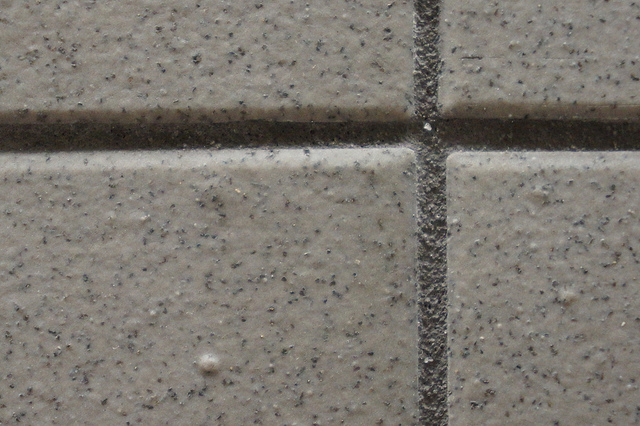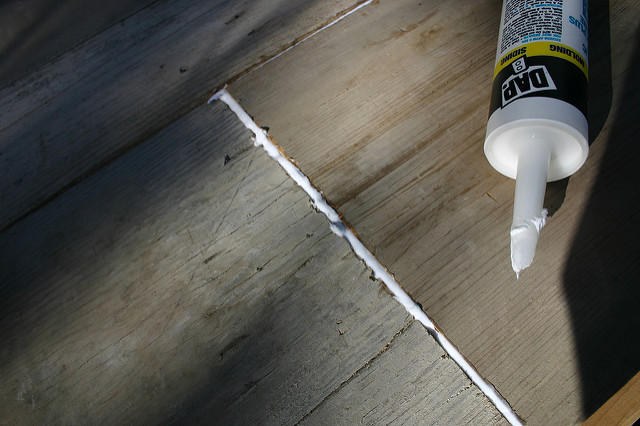Difference Between Grout and Caulk
Grout and caulk are two common joint sealants used in households. They are often confused and mistaken as the same thing. There are remarkable differences between these sealants. In a nutshell, grout seals the joints of the same materials whereas caulk can be used to seal the joints of different materials. This article unfolds the key differences between caulk and grout.
What is Grout?
Made of a mixture of cement, water and sand, grout is a sealant that fills in crevices to keep tiles together mostly on horizontal or vertical surfaces. It is available in two types, viz. cement-based and epoxy-based grout. Grout is generally thick and porous hence not used in areas that require waterproof or airtight properties.
Comparing the cement-based and epoxy-based grout, the cement-based is popular among homeowners mainly due to its inexpensive price tag. In terms of properties, it is less flexible and can come in sanded or unsanded version the use of which depends on how wider the joints are. For instance, for thinner joints, an unsanded grout is most applicable to create a smoother surface and bond the materials. The sanded grout is best suited to wider joints in tiles. Grout prevents chipping at the edges of materials it is applied on.
Epoxy grout is less common mainly due to its expensive price tag. It is, however, flexible and has waterproof properties. It is also stronger than the cement-based grout but it is not as flexible as caulk, which is solely made of polymers such as rubber, polyurethane, acrylic and latex.
Grout is applied using float and the excess residues are easily removed with the sponge. Although grout is versatile and can be used in many materials, it should only be used in joints of the same plane. It does not have the waterproof properties to be used in planes that form 90 degrees, or those of different materials.
What is Caulk?
Caulk is a waterproof joint sealant predominantly made of polymers such as polyurethane, latex, acrylic, rubber. These polymers make this sealant flexible and applicable in joints that require airtight and waterproof qualities. But, at the same time, they make it less strong than the grout hence one may have to replace caulk earlier than grout.
Caulk is also versatile, and so it applied in many building materials such as sinks, windows, doors, tiles and many more. It can seal the seams between windows and doors to prevent any water penetration. Oftentimes, caulk is used in planes that are 90 degrees to each other. Because of its susceptibility to break, caulk is seldom used to replace grout. Again, it is rarely used in large projects where grout should be used.
Caulk is applied using the caulk gun. It comes in ready-to-use tubes that can be squeezed to apply it on desired places. Like grout, caulk also comes in different types: latex, silicone, and a blend of silicone and latex. The latex variance is the most popular and easiest to apply. It also cleans up with ease by using soap and water. Silicone caulk, on the other hand, is the most durable and flexible, and it is best suited to nonporous surfaces. It usually comes in neutral or clear colors so it is not advisable to paint over it. A blend of the latex and silicone combines both properties.
Key Differences Between Grout and Caulk
Definition
Grout is a porous joint sealant that looks like mortar or paste used in crevices. It is made of cement, sand, water and other color pigments. Caulk is a waterproof joint sealant made of polymers such as polyurethane, latex, acrylic, rubber and others.
Applications
Grout is applied using float. It is applied between tiles to join them thus creating an even surface. However, grout generally does not suit on planes that are 90 degrees to each due to its lack of flexibility and waterproof qualities. The epoxy type of grout is somehow flexible and waterproof as well, but it is expensive and thus rarely used.
Caulk is applied on planes of different materials that are 90 degrees to each other. It is flexible, and so it seals the joints to prevent any water leakage. Because of its susceptibility to breakage, caulk is seldom applied in large projects. Moreover, it is not a good idea to replace grout with caulk due to the difference in strength.
Variances
Grout is available as the cement-based and epoxy-based. The epoxy-based is made of resins that give it flexibility and waterproof qualities. It is, however, expensive. The cement-based has the mixture of the Portland cement, sand and water with other pigments.
Caulk is available in latex, silicone and a blend of silicone and later as well. It is made of different polymers.
Waterproof
Cement-based grout is not waterproof while the epoxy-based grout is. Caulk is generally waterproof hence it is applied on joints where surfaces are perpendicular to each other to prevent any water leakage.
Grout Vs. Caulk: Comparison Chart
Summary of Grout Vs. Caulk
- Grout is a porous joint sealant often applied between tiles
- Caulk is waterproof and usually applied in perpendicular tile planes
- Grout available in epoxy and cement versions but the epoxy is expensive
- Caulk is made of polymers
- Grout is not waterproof
- Grout is strong and thus protects tiles from chipping or cracking
- Caulk is flexible
- Both grout and caulk can be available in sanded and unsanded versions
- Caulk is not strong, and so it is seldom used in large projects
- Difference Between CBD and Indica - April 22, 2019
- Difference Between Unilateral Contract and Bilateral Contract - February 8, 2019
- Difference Between Polki and Kundan - December 15, 2018
Search DifferenceBetween.net :
Leave a Response
References :
[0]Marie L. Leonard (2009). Marie's Home Improvement Guide. Hachette UK
[1]Angelica Pozo (2008). Making & Installing Handmade Tiles. Sterling Publishing Company, Inc.
[2]Image credit: https://www.flickr.com/photos/ephidryn/3091200674
[3]Image credit: https://www.flickr.com/photos/editor/7243889774



